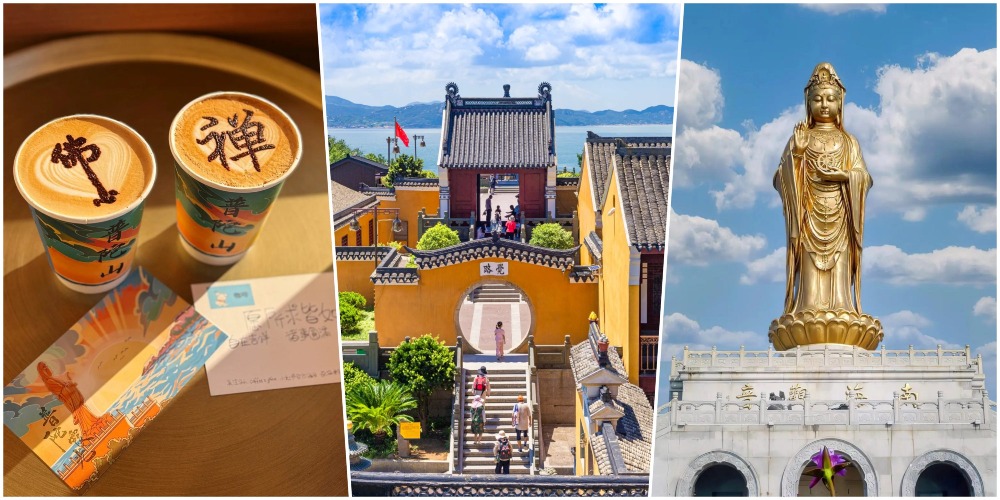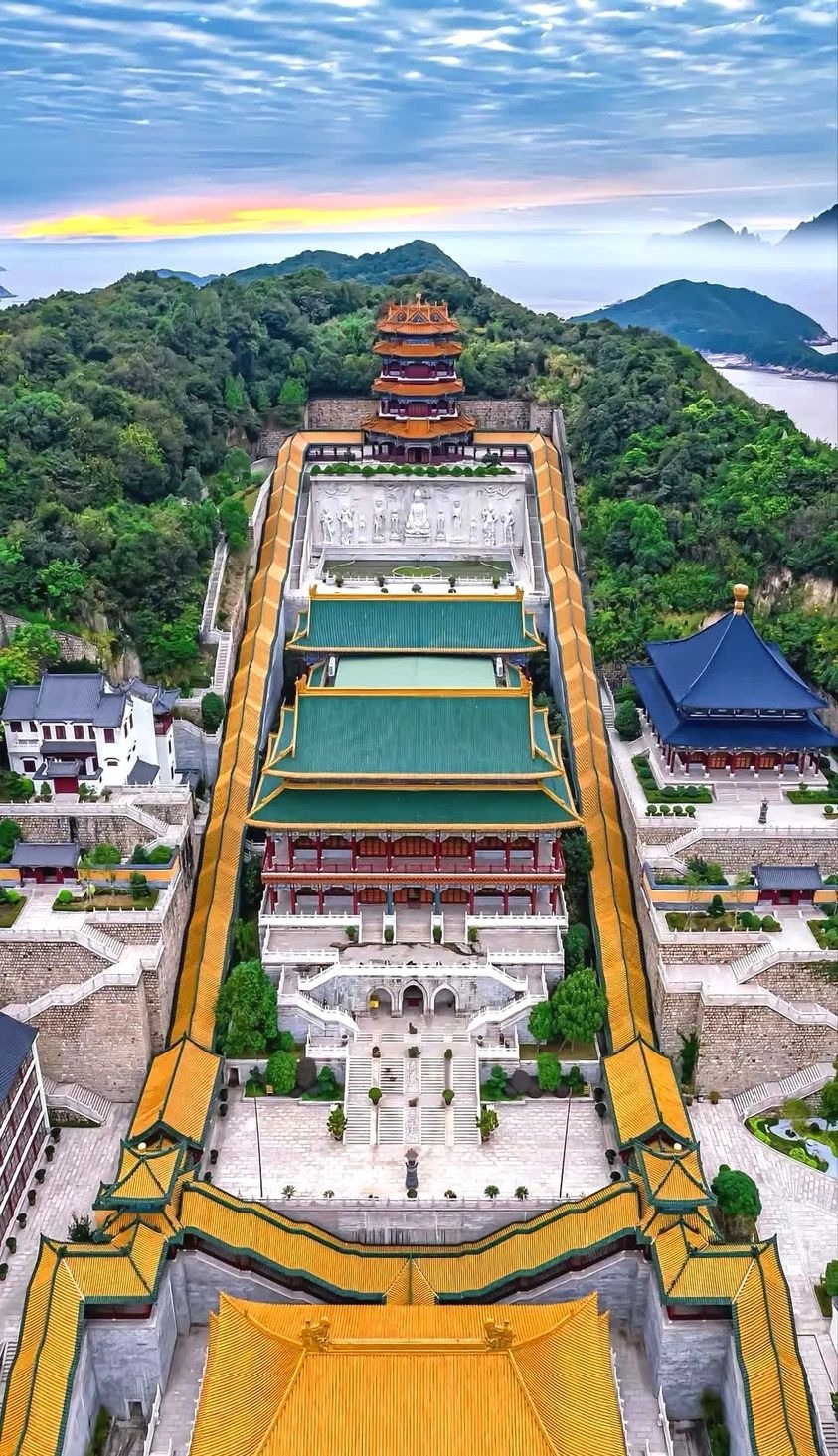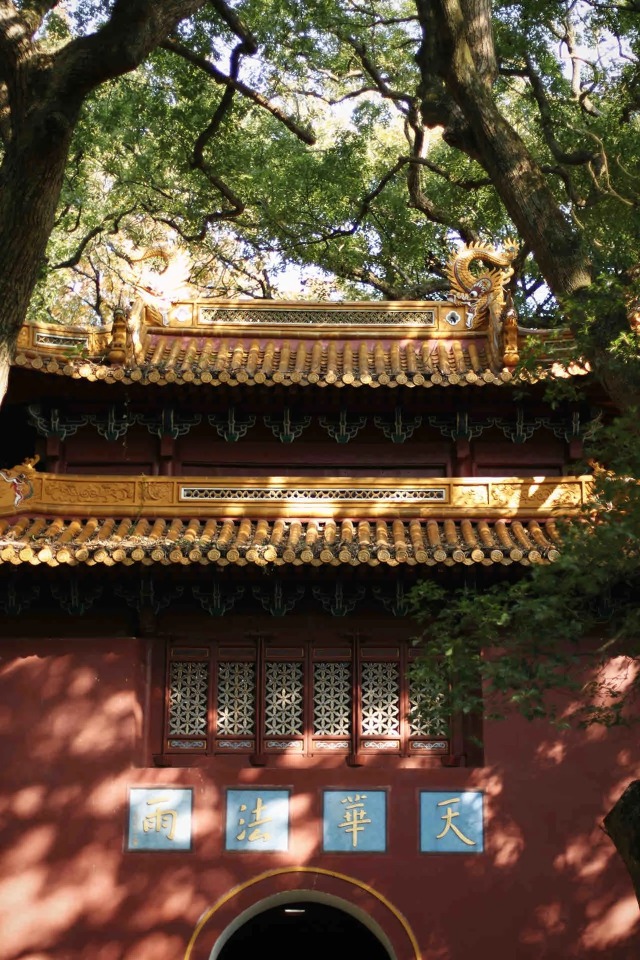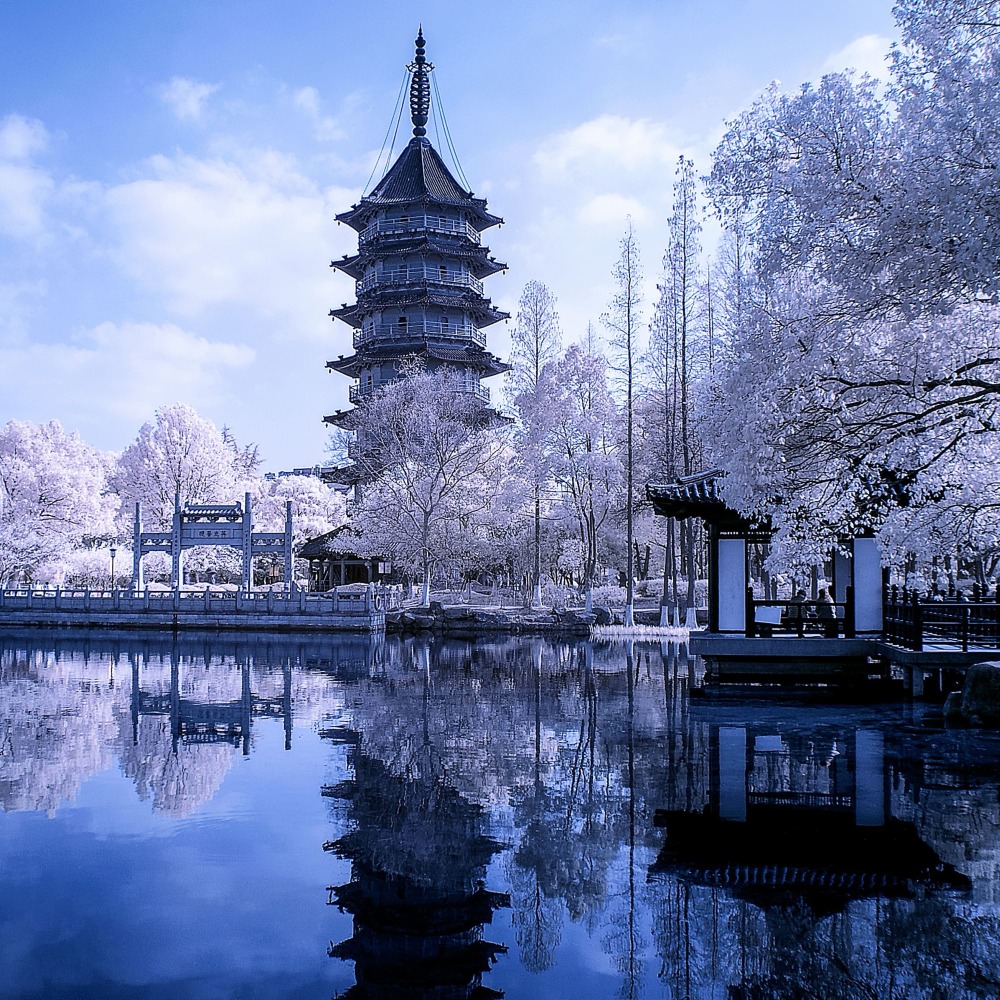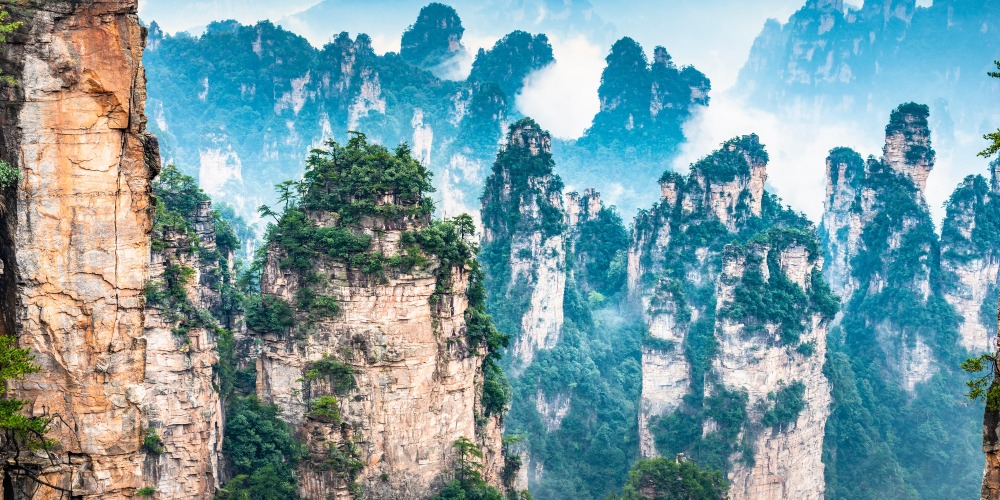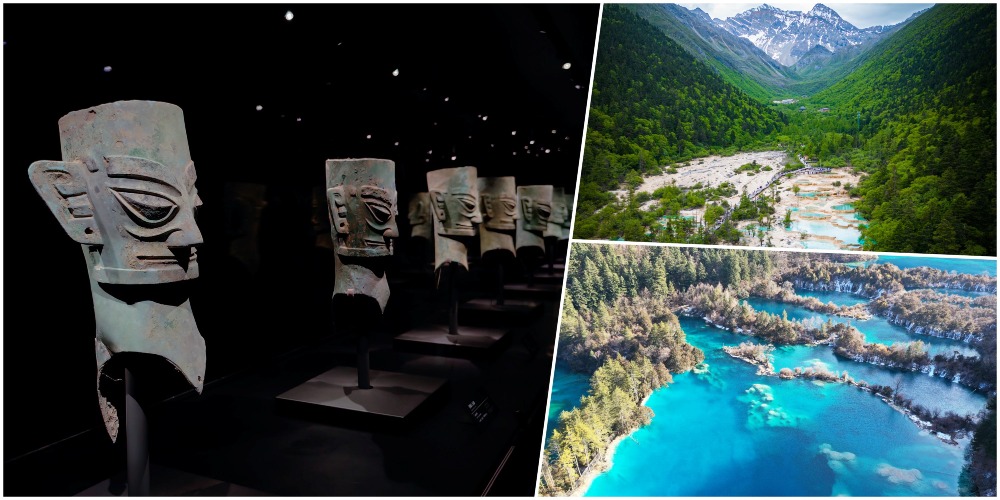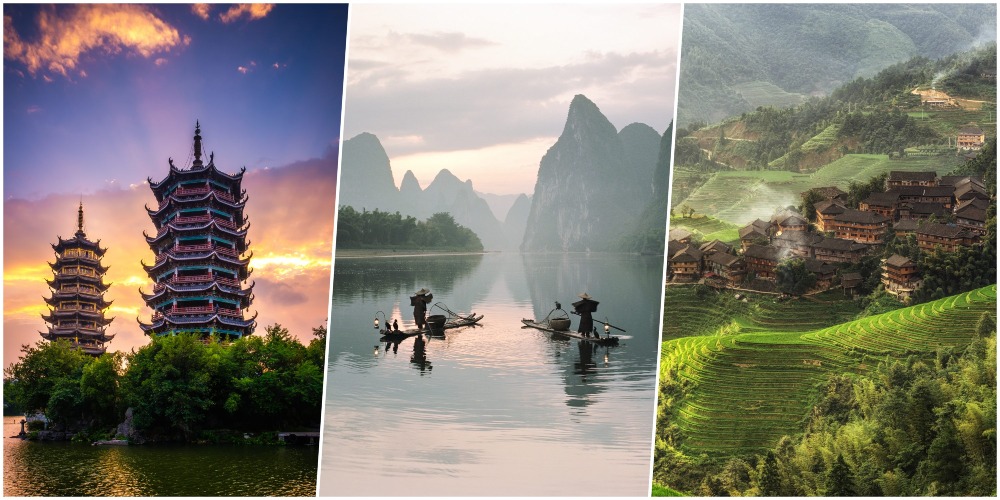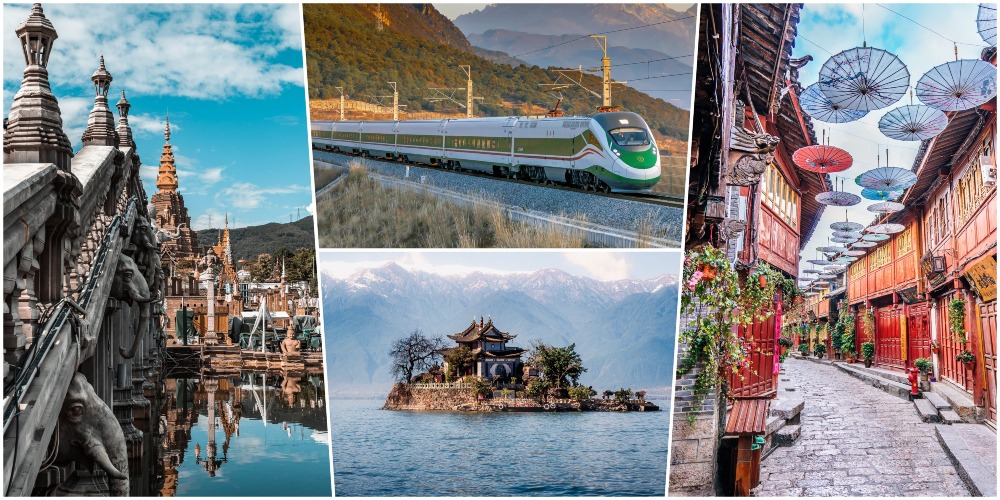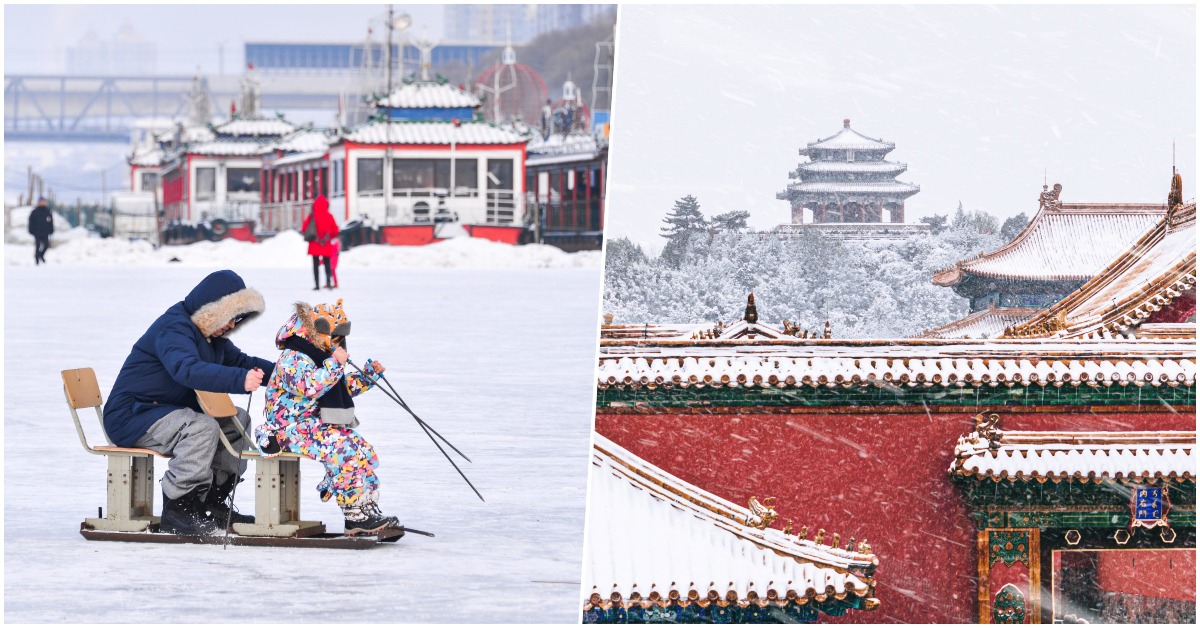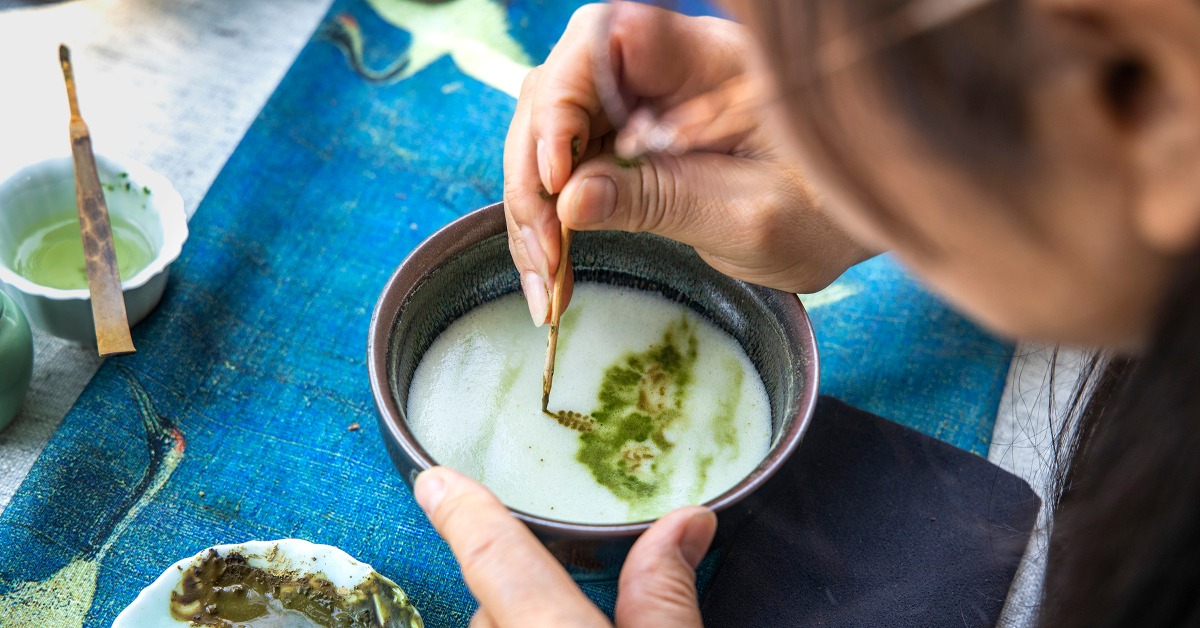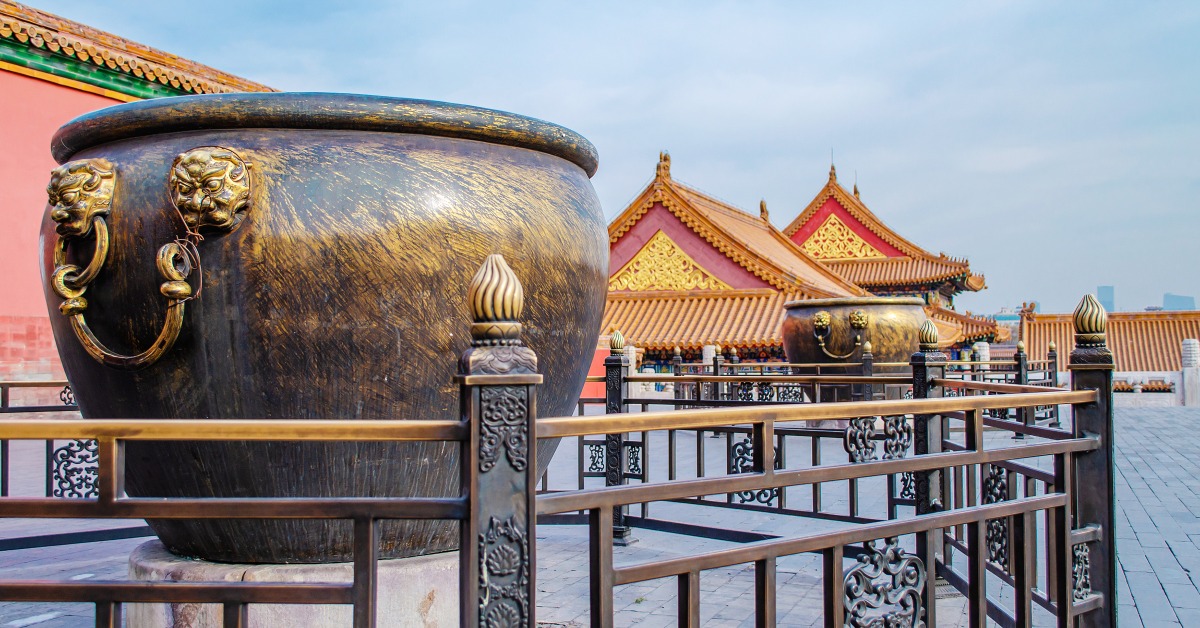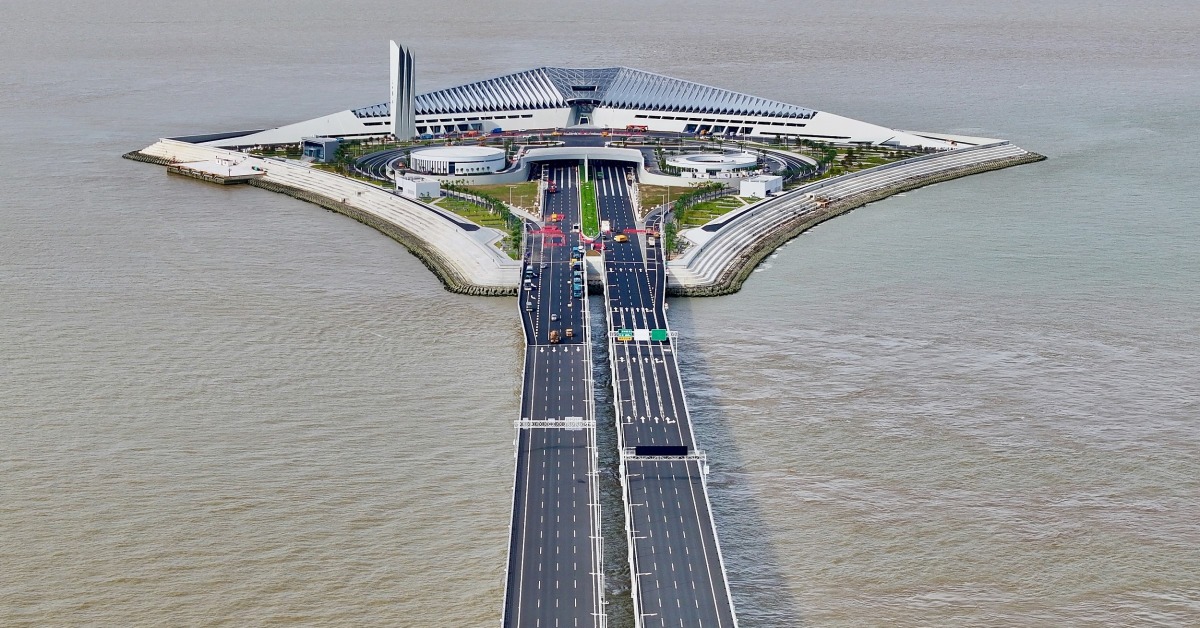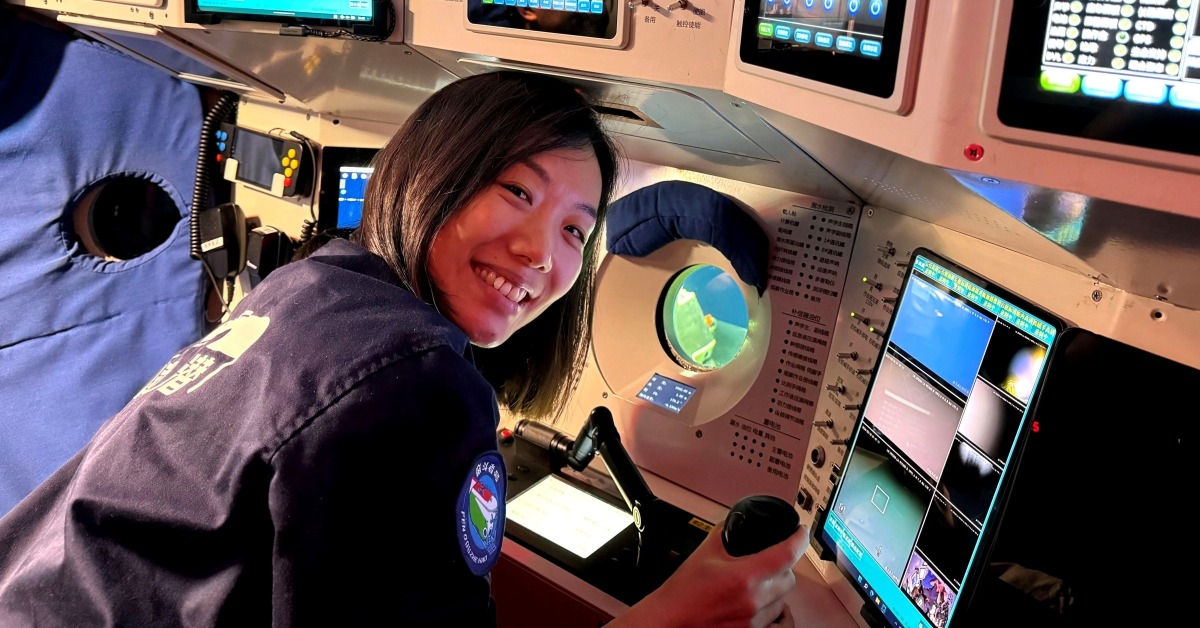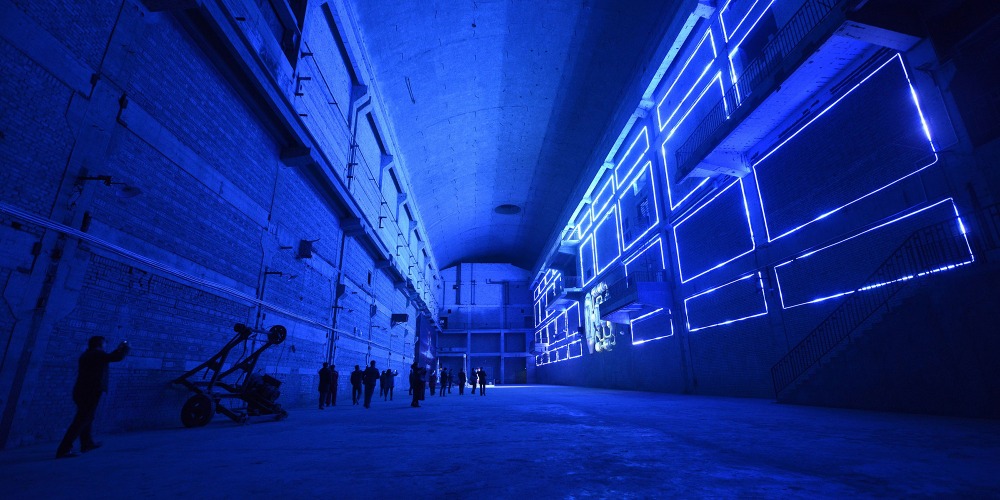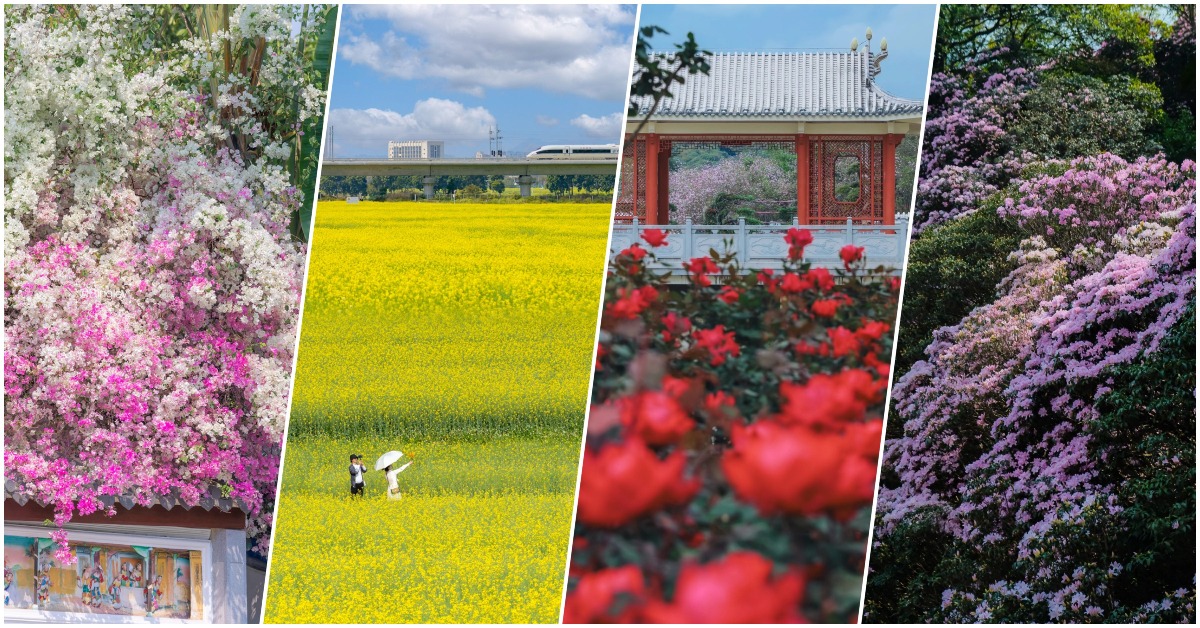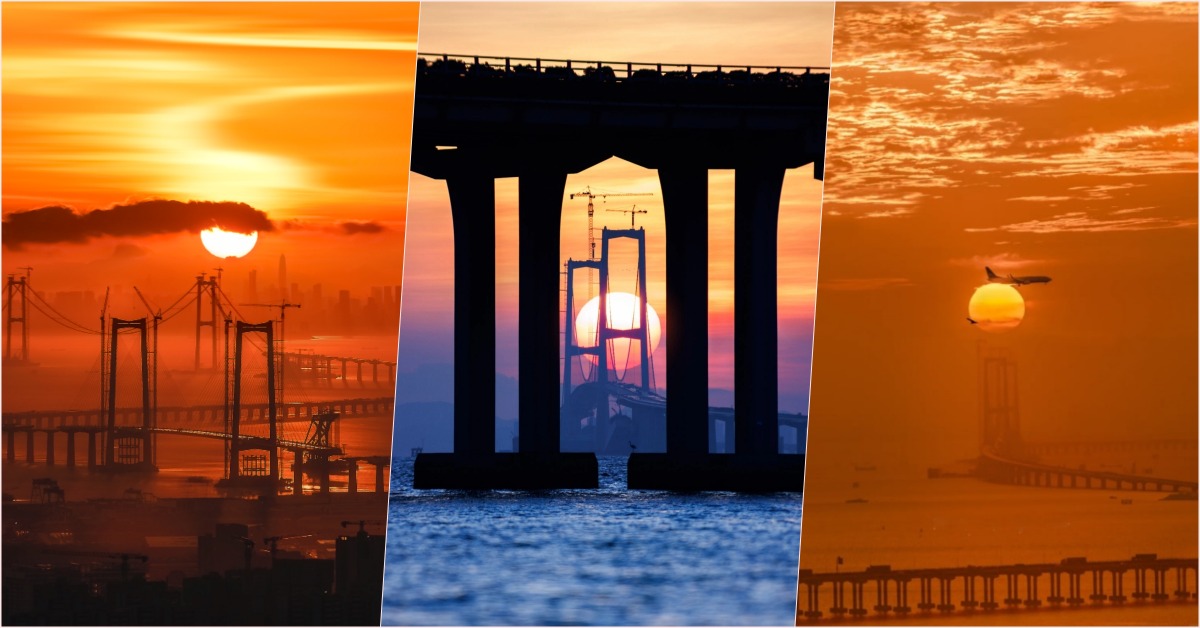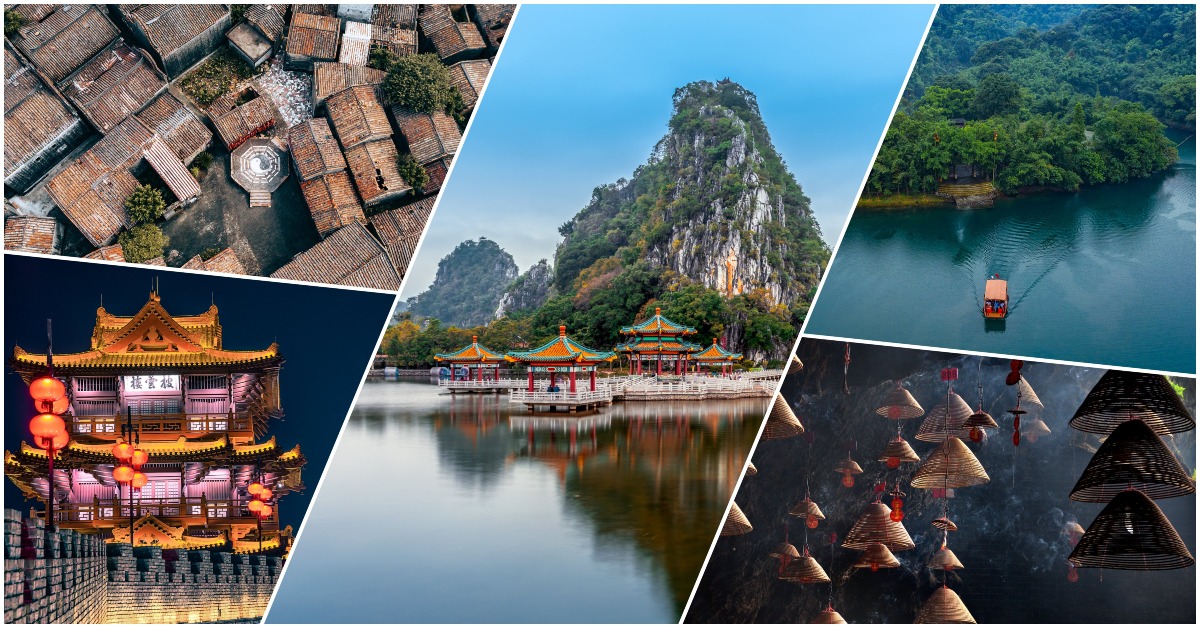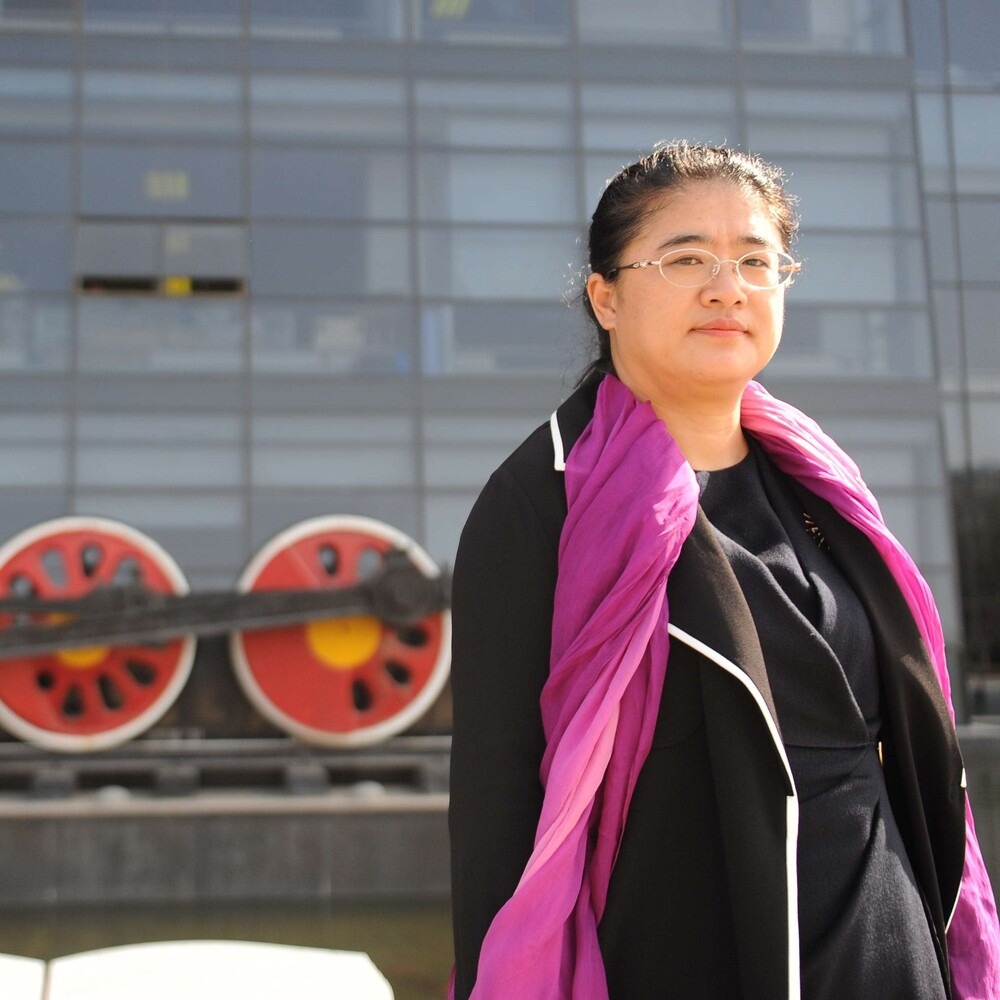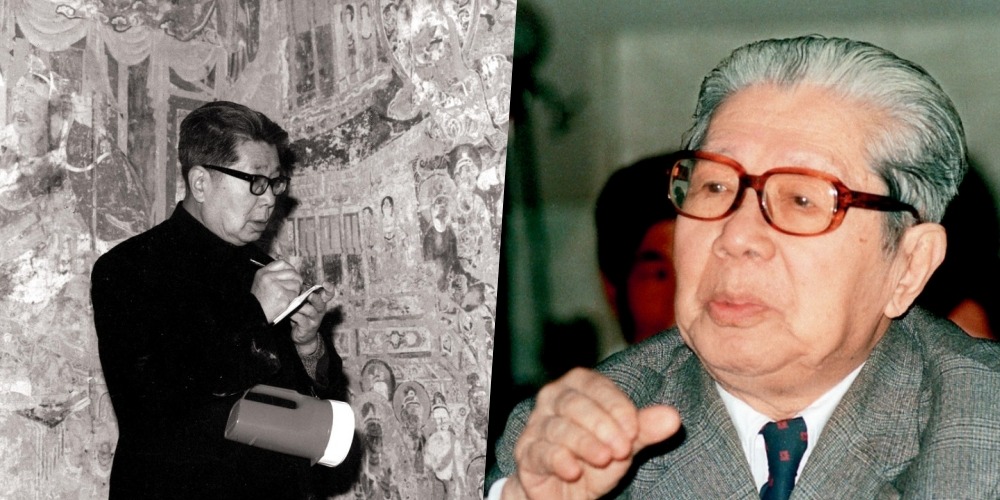Published : 2025-05-13
Located in northeastern Zhejiang Province, Zhoushan is composed of over 1,300 islands, making it the largest archipelago in China.
It is renowned for its blue seas, golden sands, and Buddhist culture, with Mount Putuo being one of the Four Sacred Mountains of Buddhism in China.
In addition to being a famous bodhimanda of Guanyin, Mount Putuo boasts beautiful island scenery, attracting many pilgrims annually. Let's embark on a pilgrimage and sea-viewing journey to Mount Putuo!
Puji Temple: The largest temple on Mount Putuo
When touring Mount Putuo, the journey usually starts from Zhujiajian Wharf and then goes around the island, mainly divided into three major areas.
The first area centres around Puji Temple and includes attractions such as the Xitian Scenic Area on the west side of the island.
Puji Temple, also known as the Front Temple, is located on the southern foot of Lingjiu Peak on Mount Putuo. It was built during the Later Liang period, with a history of over 1,000 years, making it the oldest of the three great ancient temples on Mount Putuo.
It is also the largest ancient temple on the island. Inside the temple, the main statue of Guanyin is enshrined in the Yuan Tong Treasure Hall, and the architecture is magnificent, surrounded by towering ancient trees.
Puji Temple still retains many typical Qing Dynasty official-style buildings, laid out in a traditional central axis design, with yellow walls and grey tiles, presenting a very magnificent sight.
If you plan to visit Puji Temple to offer prayers, you can refer to the following sequence: worship from left to right within the temple, then return to the front of the Bodhisattva to offer incense and make wishes.
Note that each main hall is dedicated to different wishes, and you can visit according to your needs.
Read more: Hangzhou's 3 most popular temples take you on a Zen journey
Fayu Temple: Admire national treasures
After visiting Puji Temple, you can continue your tour by heading north on Mount Putuo toward Buddha Peak Mountain to reach Fayu Temple.
Fayu Temple, also known as the Back Temple, was founded in the Ming Dynasty. It is the second largest temple on Mount Putuo after Puji Temple.
The entire temple is built along the mountain in layers, with an austere and ancient atmosphere.
Precious ancient trees such as dragon-phoenix cypress, ancient ginkgo, and Buddhist pines grow within the temple, making it feel like a quiet, serene garden.
When visiting Fayu Temple, worshiping Buddha is of course an important aspect, but do not miss the chance to see the national treasure, the Nine-Dragon Zaojing (caisson ceiling).
This Zaojing is located at the top of the Nine-Dragon Guanyin Hall, originally a relic from the Ming Imperial Palace, and was moved here during the Qing Dynasty. It is a rare ancient Zaojing treasure.
You can take a cable car from Fayu Temple to Buddha Peak Mountain, the main mountain of Mount Putuo, with an altitude of about 300 metres.
It is also a great place to take in the views of the entire Mount Putuo, with the sea breeze and the Zen atmosphere offering a rejuvenating experience.
South Sea Guanyin and Purple Bamboo Forest
Heading south along the mountain path, you will soon arrive at the third scenic area of Mount Putuo, which includes attractions such as South Sea Guanyin and Purple Bamboo Forest.
The South Sea Guanyin, the most famous landmark of Mount Putuo, stands 33 meters tall, symbolizing the 33 manifestations of Guanyin.
The statue is cast from nearly 100 copper wall panels and is one of the tallest bronze standing Guanyin statues in the world.

Ascending to the South Sea Guanyin Statue Plaza, visitors can gaze into the distance at the Zhoushan Archipelago scattered like stars across the sea.
At sunset, they may witness the miraculous spectacle of the statue enveloped in golden light, evoking the Buddha's radiant blessings.
This scene fully embodies the ethereal charm of the "Buddhist Kingdom between Sea and Sky," revealing its spiritual essence.
After visiting the South Sea Guanyin, walk south along the main road for about 8 minutes to reach the Purple Bamboo Forest area.
Located on the southeastern slope of Mount Putuo, it is named after the auspicious purple bamboo that once appeared in the surrounding rocks and is said to be the place where Guanyin practiced.
There are two major attractions in the Purple Bamboo Forest, namely, the "Bukenqu Guanyin Temple" which is the ancestral temple of Mount Putuo, and the natural sea cave "Chaoyin Cave."
Visitors can first tour the Bukenqu Guanyin Temple to understand the legendary connection between the Tang Dynasty monk Huiguo and Mount Putuo, enjoy the Zen atmosphere of the ancient temple.
Afterwards, head to Chaoyin Cave where you can walk along the wooden boardwalk and witness the spectacular waves crashing against the cliffs—a perfect way to conclude your day.
Nowadays, there are regular direct flights from Hong Kong to Zhoushan. The entire journey takes only 2 hours and 15 minutes.
Take advantage of the holidays and make a quick trip to Zhoushan to relax your body and mind!
Read more: Zhejiang Zhoushan's most beautiful "uninhabited village"
